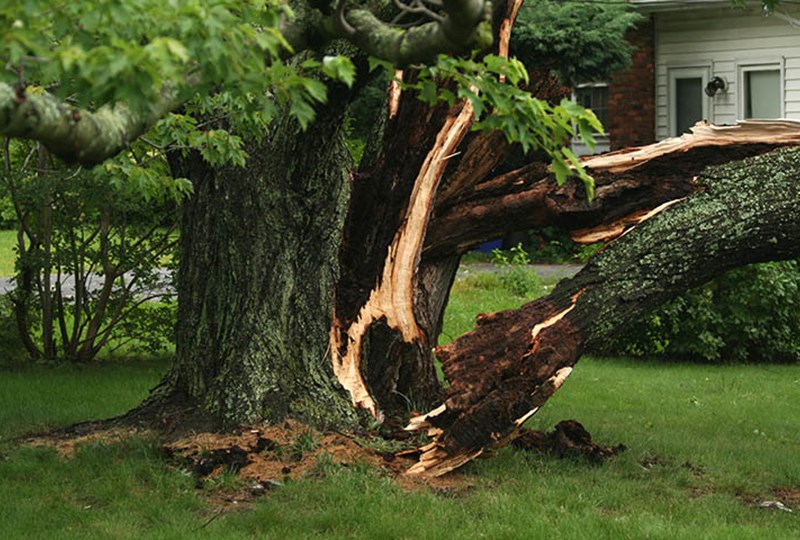
Recent summer storms have everyone asking — who pays for the damages caused by a fallen tree?
First, it’s important to know that once a tree is down, homeowner’s insurance only comes into effect if property is damaged. So if a tree falls cleanly onto the lawn, then the homeowner will have to pay for 100 percent of the tree removal costs. If a tree hits any property covered by the homeowner’s insurance policy, such as a driveway, fence or the house itself, then the policy will cover all repair and tree removal expenses, less the deductible.
In the case above, we describe a scenario where a homeowner’s tree falls in his or her own yard. What happens if the tree was rooted in your yard, but falls into your neighbor’s yard? If property damage is caused, your neighbor will have to file a homeowner’s insurance claim on their own policy.
If no damage is caused, and your tree falls clear into your neighbor’s yard, everything gets a bit stickier. Good manners dictate that you should, at minimum, offer to pay for some, if not all, of the removal expense. Consider this: if valuable property of yours blew into your neighbor’s yard, you would expect to be able to retrieve it. This should apply to a not so valuable fallen tree as well — it’s still your obligation as it was something residing on your property. Besides, the discord that could come from ignoring the problem is likely worse than the expense of removing the offending stump and branches. Having good neighbors often means being a good neighbor, so roll up your sleeves and extend a neighborly hand!








